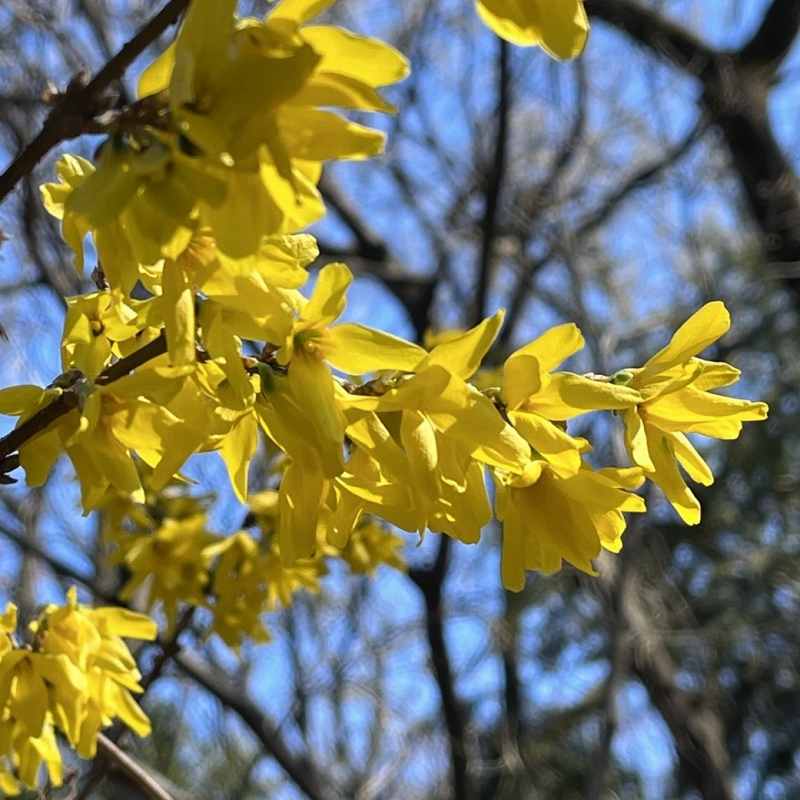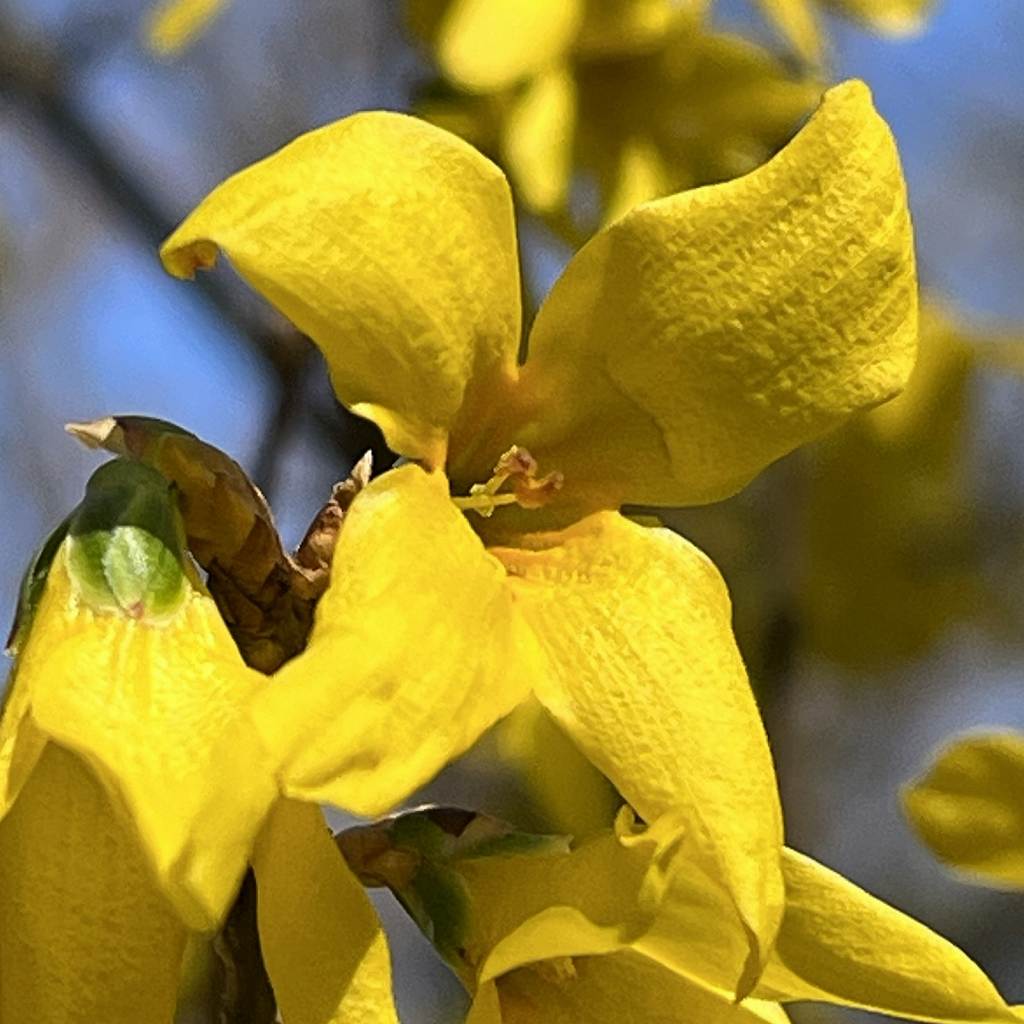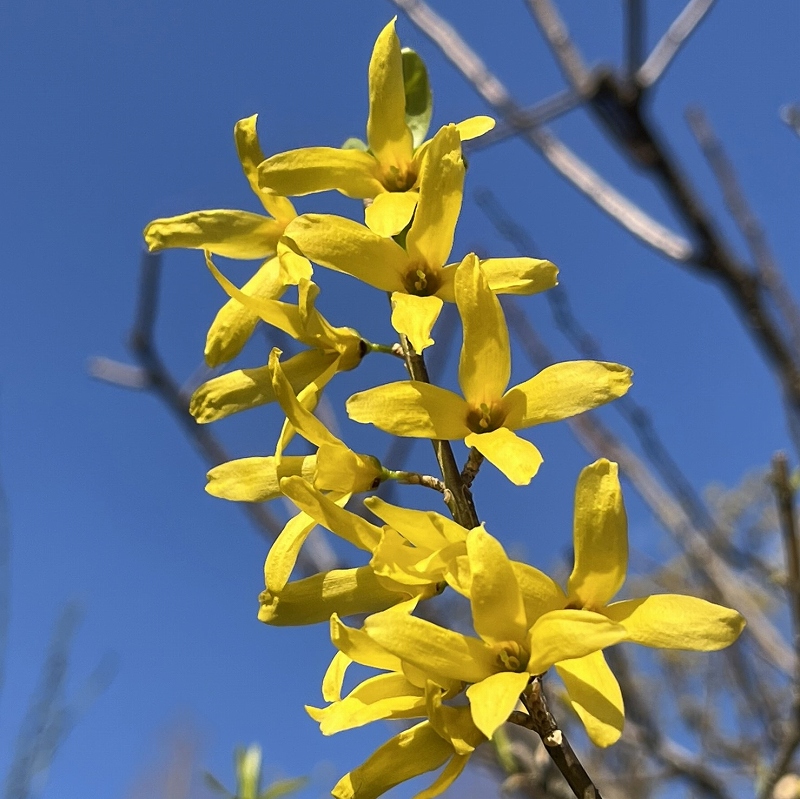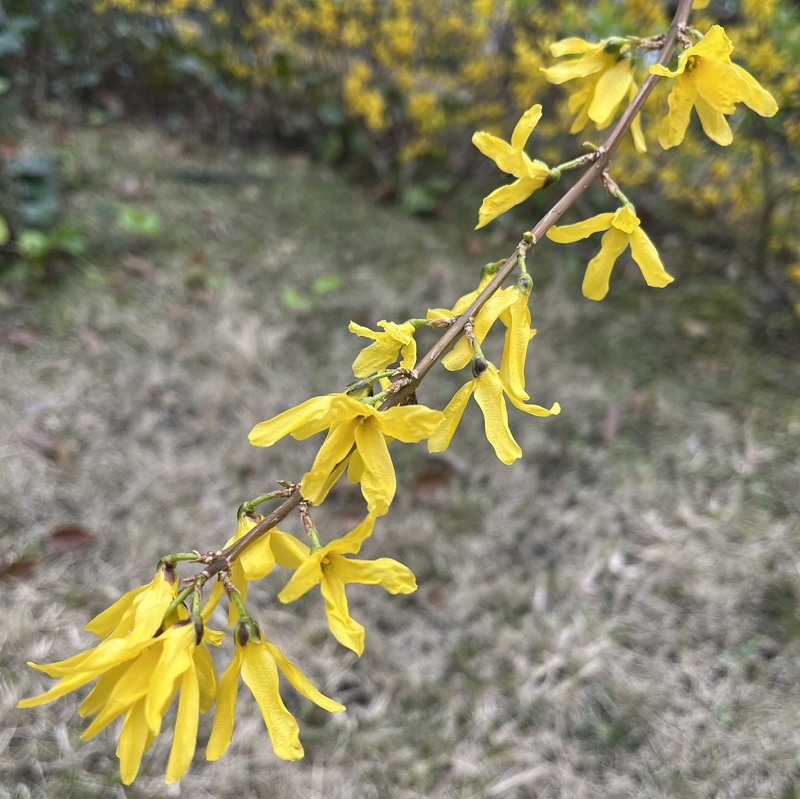レンギョウの英名ゴールデンベルは「金色の鈴」という意味。しなやかな枝に明るい花々を連ねて春を告げます。花言葉も「希望」「期待」。
English name of Forsythia is “Golden Bell”. Spring is announced with bright flowers on supple branches. The language of flowers is “hope” and “expectation”.
【仮名】レンギョウ
【和名】連翹
【英名】Forsythia, Golden Bell
【学名】Forsythia suspensa
【誕生】01/ 18, 02/ 12, 03/ 22, 04/ 02
【開花】03, 04月
【花色】Yellow








レンギョウ
レンギョウの来歴
レンギョウはモクセイ科の落葉低木です。原産地は中国で、日本へは古くに薬用で渡来。果実が解熱、消炎、利尿、排膿、鎮痛などに用いられました。英名ゴールデンベルは「金色の鈴」という意味。しなやかな枝に明るい花々を連ねて春を告げます。花言葉も「希望」「期待」など。
レンギョウの名前
レンギョウの名前は漢方の生薬名「連翹」の音読み。それが日本で定着するまでは「鼬草」と呼ばれました。ラテン語の属名フォーサイシアは18世紀のスコットランドの園芸家ウィリアム・フォーサイスへの献名。種小名サスペンサは「垂れる」という意味で、枝の性状に由来します。
レンギョウの姿形
レンギョウは雌雄異株。樹皮は褐色で縦に裂け目が入ります。枝は中空で節があり、半つる性で弓のように下垂し、接地したところで根が発生。葉は縁に鋸歯が入る卵形で対生します。花は下を向いて咲き、筒状の花冠が丸く4裂。花後の蒴果は熟すと2つに裂け、種子を散らします。
レンギョウの近縁種
レンギョウの近縁種「支那連翹」は枝が立ち上がって垂れず、葉縁の上部のみ鋸歯が入り、花が葉と同時に開いて黄色が淡く、花筒が細長く裂けます。「朝鮮連翹」は連翹と支那連翹それぞれの特徴を保有。枝が垂れ、花の黄色が濃い一方、葉縁に鋸歯が入り、花筒が細長く裂けます。
レンギョウの在来種
レンギョウの在来種「大和連翹」は中国地方、その変種「小豆島連翹」は瀬戸内の石灰岩地に自生。控えめで趣きのある花を咲かせます。この大和連翹と支那連翹の交配種「合いの子連翹」は大きな花がたくさん。改良品種の「スペクタビリス」や「リンウッド」は花色も鮮やかです。
Forsythia
History of Forsythia
Forsythia is a deciduous shrub of the Oleaceae family. The place of origin is China, and it was brought to Japan for medicinal purposes in ancient times. The fruit was used for antipyretic, anti-inflammatory, diuretic, purulent drainage, and analgesic. English name is “Golden Bell”. Spring is announced with bright flowers on supple branches. The language of flowers is “hope” and “expectation”.
Name of Forsythia
Japanese name of forsythia comes from the Chinese herbal medicine name. It was called “weasel grass” until that name became established in Japan. The Latin genus Forsythia is a tribute to the 18th-century Scottish gardener William Forsyth. The species name Suspensa means “hanging” and is derived from the nature of the branches.
Shape of Forsythia
Forsythia is dioecious. The bark is brown and vertically fissured. The branches are hollow and have knots, are semi-climbing and droop like bows, and roots develop when they touch the ground. The leaves are ovate and opposite with serrated edges. The flowers bloom downward, and the cylindrical corolla is four-lobed. The post-flowering capsule splits in two when ripe and scatters the seeds.
Relative species of Forsythia
A close relative of forsythia, “Viridissima” has branches that stand upright without drooping, only the upper part of the leaf edge is saw-toothed, the flowers open at the same time as the leaves and are pale yellow, and the flower tube is long and split. “Ovata” has characteristics of both Suspensa and Viridissima. While the branches droop and the flowers are dark yellow, the leaf margins are saw-toothed and the flower tube splits long and thin.
Native species of Forsythia
The native forsythia “Japonica” is native to the Chugoku region, and its variant “Togashii” is native to the limestone areas of the Seto Inland Sea. Produces modest and attractive flowers. This Japonica and Viridissima crossbreed “Forsythia x intermedia” has many large flowers. The improved varieties “Spectabilis” and “Lynwood” have bright flower colors.


